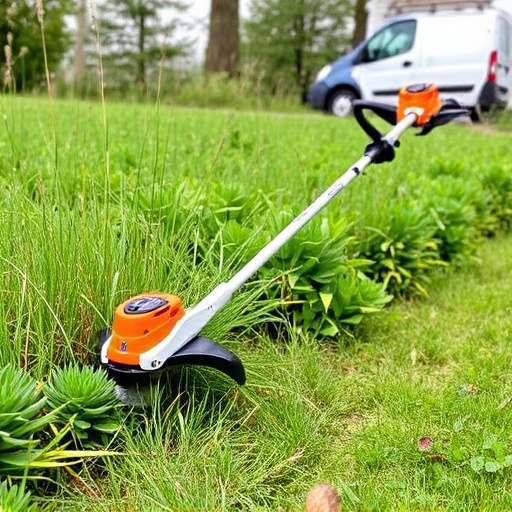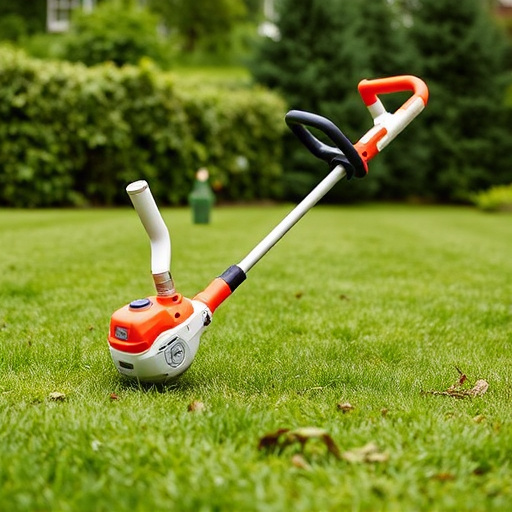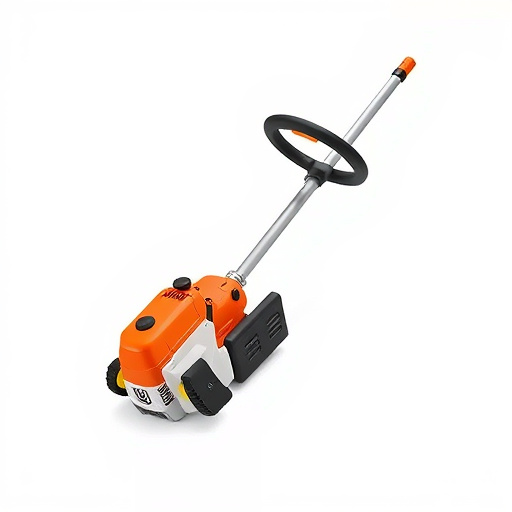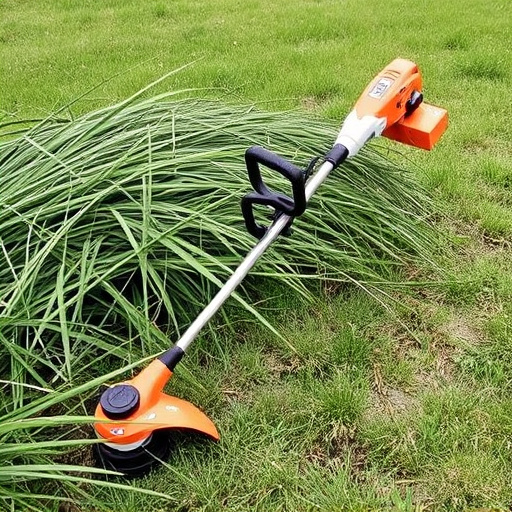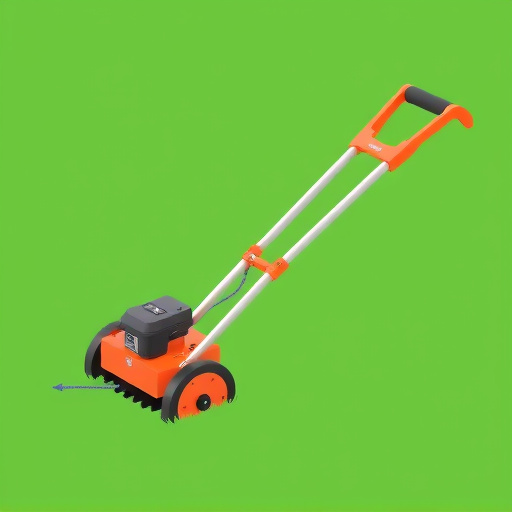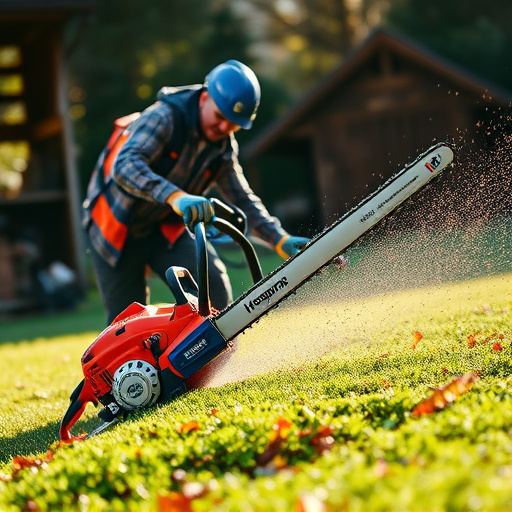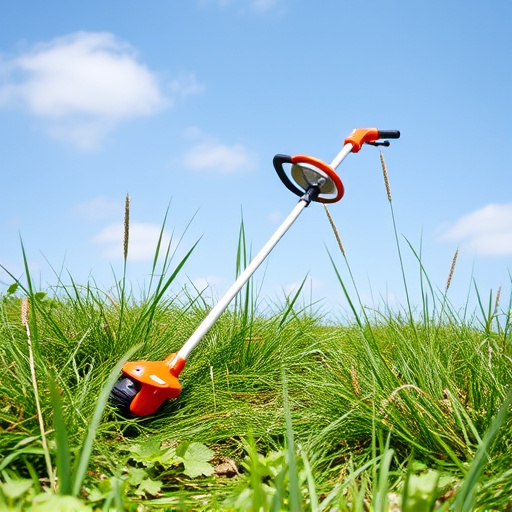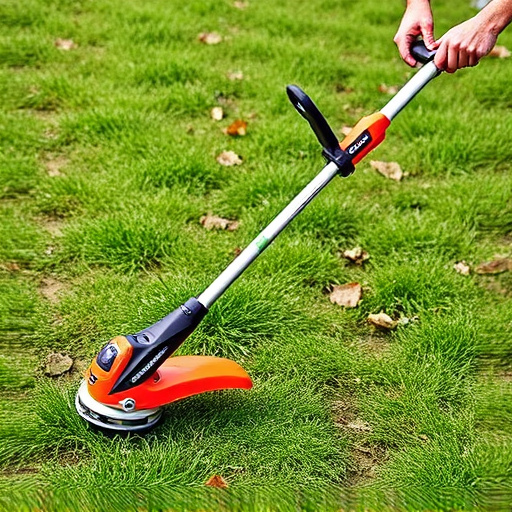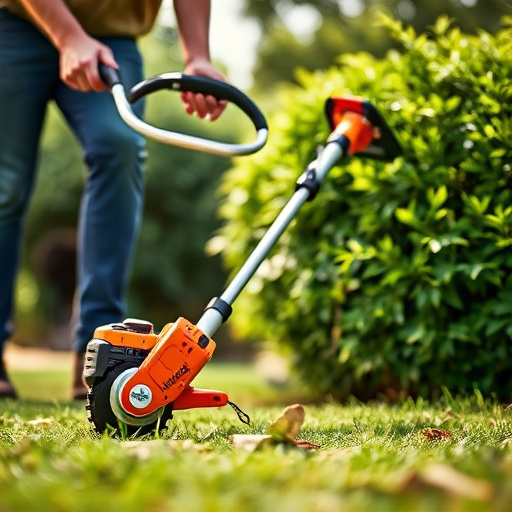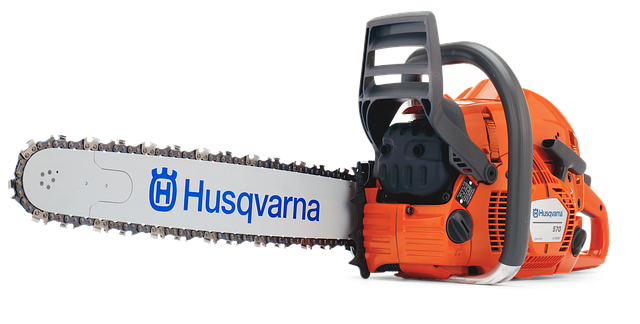Brushcutters Husqvarna: Revolutionizing Outdoor Maintenance
Introduction
Welcome to an in-depth exploration of the world of brushcutters, specifically focusing on the renowned brand Husqvarna. This article aims to guide readers through the history, functionality, global impact, economic significance, technological innovations, regulatory landscape, and future prospects of these versatile machines. By delving into these aspects, we will uncover why Husqvarna brushcutters have become a game-changer in the outdoor power equipment industry, offering efficient solutions for land management.
Understanding Brushcutters Husqvarna: A Comprehensive Overview
Definition:
A brushcutter, in its essence, is a powerful handheld or mounted machine designed for cutting dense vegetation, including grass, weeds, and shrubs. These tools are particularly useful for maintaining landscapes, clearing right-of-ways, and farming tasks. Husqvarna, a Swedish company, has established itself as a pioneer and leading manufacturer of high-performance brushcutters, catering to both professional users and homeowners.
Core Components:
- Engine: The heart of the brushcutter, typically powered by gasoline or electricity. Husqvarna offers a range of engines optimized for power and efficiency.
- Head: This is where the cutting action occurs, featuring a rotating blade or set of blades designed to cut through various materials.
- Handlebar and Controls: Ergonomically designed for operator comfort and control, allowing users to steer and adjust settings easily.
- Fuel System (for gasoline models): Ensures efficient combustion, including fuel delivery and spark plug systems.
- Safety Features: Modern Husqvarna brushcutters incorporate safety mechanisms like safety switches and protective enclosures to prevent accidents.
Historical Context:
The concept of brush cutters originated in the early 20th century as a solution for managing farmland and gardens. Over time, these machines evolved from simple mechanical designs to sophisticated, multi-functional tools. Husqvarna, founded in 1689, has been at the forefront of this evolution, introducing innovations that have set industry standards. Their brushcutters are now renowned for their durability, performance, and user-friendly design, making them a preferred choice worldwide.
Significance and Fit:
Brushcutters Husqvarna play a pivotal role in various industries:
- Landscaping and Garden Maintenance: Professional landscapers rely on these tools for quick and efficient vegetation management.
- Agriculture: Farmers use brushcutters for border maintenance, weed control, and clearing fields.
- Urban Development: They aid in maintaining urban green spaces and managing overgrown areas.
- Homeowner Use: Many homeowners find Husqvarna brushcutters versatile and convenient for their yard work.
Global Impact and Trends
International Influence:
Husqvarna’s brushcutters have left an indelible mark on the global market, with a significant presence in Europe, North America, Asia Pacific, and Latin America. This brand has become synonymous with quality and innovation, influencing international standards and practices.
Regional Trends:
- Europe: Known for its stringent environmental regulations, Europe favors brushcutters with low emissions and advanced noise reduction features. Husqvarna’s eco-friendly models have gained a strong foothold here.
- North America: The market is characterized by a mix of professional and homeowner users, leading to a demand for versatile, easy-to-use brushcutters.
- Asia Pacific: Rapid urbanization has sparked a need for efficient land management solutions, driving the adoption of Husqvarna’s technology.
- Latin America: With its diverse landscapes, this region values rugged and adaptable brushcutters, which Husqvarna provides.
Market Dynamics:
- Growth in Professional Use: The landscaping industry’s expansion has increased demand for professional-grade brushcutters, boosting Husqvarna’s commercial sales.
- Homeowner Market: Rising disposable incomes in emerging economies have led to a surge in homeowner purchases of high-quality outdoor equipment, including Husqvarna brushcutters.
- Online Sales and E-commerce: Digital platforms have revolutionized how customers buy brushcutters, offering convenience and access to global brands like Husqvarna.
Economic Considerations
Market Analysis:
The global brushcutter market exhibits steady growth, driven by increasing urbanization, land management needs, and a rising middle class in developing countries. Husqvarna, with its diverse product range, captures a significant market share.
Investment Patterns:
- R&D Spending: Husqvarna invests heavily in research and development to create innovative products, ensuring they remain at the cutting edge of technology.
- Manufacturing Facilities: The company operates multiple production sites worldwide, allowing localized manufacturing and distribution, which reduces costs and improves market reach.
- Sales and Distribution Network: A robust global network ensures efficient product delivery and after-sales service, enhancing customer satisfaction.
Economic Impact:
- Job Creation: Husqvarna’s operations contribute to employment in various sectors, including manufacturing, sales, and landscaping services.
- Revenue Generation: The brand generates substantial revenue through equipment sales, spare parts, and maintenance services.
- Supply Chain Effects: The company’s economic influence extends to suppliers and distributors, fostering a thriving outdoor power equipment industry.
Technological Advancements
Invention of the Brushcutter Engine:
One of Husqvarna’s most significant technological breakthroughs was the development of efficient, reliable engines that revolutionized brushcutter performance. These engines have evolved over time, incorporating advancements like:
- Fuel Injection: Precise fuel delivery for improved efficiency and reduced emissions.
- Direct Injection: Enhances engine power and responsiveness.
- Variable Speed Transmission: Allows users to adjust cutting speed according to the task, optimizing performance.
Smart Features and Connectivity:
Modern Husqvarna brushcutters are equipped with smart technology:
- Bluetooth Connectivity: Enables wireless control and data transfer, allowing users to connect accessories and receive real-time performance metrics.
- GPS Tracking: Some models offer GPS tracking for asset management and security.
- App Integration: Users can access machine diagnostics, service reminders, and troubleshooting guides via a dedicated mobile app.
- Voice Command Activation: Cutting edge models respond to voice commands, enhancing user experience.
Future Potential:
- Electric Brushcutters: Husqvarna is exploring electric power, aiming to create quieter, emission-free brushcutters for urban settings.
- Autonomous Systems: The company is investing in research for self-driving lawnmowers and brushcutters, promising a new era of hands-free land management.
- Artificial Intelligence (AI): AI can optimize machine performance and predict maintenance needs, ensuring efficient operation.
Policy and Regulation
Environmental Regulations:
Due to their impact on air quality and noise levels, brushcutters are subject to environmental regulations in many countries. Husqvarna adheres to these standards, ensuring their products meet or exceed emission and noise limits.
Safety Standards:
- European Union (EU): The EU’s Machine Directive sets safety requirements for power tools, including brushcutters. Husqvarna designs its machines with these standards in mind.
- North American Standards: In the US and Canada, the Occupational Safety and Health Administration (OSHA) and similar bodies regulate safety, influencing Husqvarna’s product features.
- Global Safety Certifications: Husqvarna’s products often obtain international certifications like CE, UL, and CSA, ensuring they meet global safety standards.
Export Controls and Trade Policies:
As a global manufacturer, Husqvarna must navigate export regulations and trade agreements. These policies impact the availability of certain technologies and components, influencing the company’s product strategies.
Challenges and Criticisms
Common Issues:
- Noise Complaints: Despite advancements, some users complain about noise levels, especially in residential areas. Husqvarna addresses this through sound insulation and quieter engines.
- Maintenance Concerns: Brushcutters require regular maintenance, which can be a challenge for homeowners. Husqvarna provides extensive service support to mitigate this.
- High Initial Costs: Professional-grade brushcutters are expensive, making them a significant investment for businesses and homeowners.
Proposed Solutions:
- Noise Reduction Technology: Continue developing quieter engines and implement sound insulation materials to meet urban noise regulations.
- Simplified Maintenance: Husqvarna can offer more user-friendly maintenance procedures and promote regular service packages.
- Affordability: Introduce budget-friendly models without compromising quality, catering to the needs of cost-conscious consumers.
Case Studies: Real-World Applications
Case Study 1: Urban Park Management (New York City)
In New York City, Husqvarna brushcutters are employed to maintain numerous parks and green spaces. The city’s intense urban environment presents unique challenges, including tight spaces and noise restrictions. Husqvarna’s quiet, efficient engines and advanced safety features make them ideal for this application. Regular training sessions ensure park maintenance workers utilize the tools effectively and safely.
Key Learnings:
- Customized solutions are essential to address urban park management needs.
- User training and support significantly enhance tool efficiency.
Case Study 2: Farmland Maintenance in India
In rural India, smallholder farmers use Husqvarna brushcutters for border maintenance and weed control. The machines help improve crop yields by reducing competition from weeds. Local dealers provide after-sales service, ensuring the sustainability of this solution for Indian farmers.
Lessons Learned:
- Brushcutters are valuable assets for small-scale farmers, increasing their productivity.
- Localized service support is crucial for widespread adoption and user satisfaction.
Case Study 3: Professional Landscaping in Australia
Australian landscaping companies rely on Husqvarna brushcutters to deliver high-quality work efficiently. The machines’ versatility allows landscapers to handle diverse projects, from residential yards to large-scale commercial properties. Regular fleet maintenance ensures the tools remain in top condition.
Takeaways:
- Professional users demand versatile, reliable tools for efficient project completion.
- Consistent maintenance practices extend tool lifespan and enhance performance.
Future Prospects: A Glimpse Ahead
Emerging Markets and Opportunities:
- Asia Pacific: The region’s rapid urbanization presents a vast opportunity for Husqvarna to expand its consumer base and introduce innovative solutions.
- Africa: With growing investment in agricultural infrastructure, Africa offers potential for Husqvarna’s technology transfer and skill development.
- Smart Home Integration: Integrating brushcutters with smart home systems could be a game-changer, allowing users to control and monitor equipment remotely.
Growth Areas:
- Electric Brushcutter Dominance: As environmental concerns grow, electric brushcutters will likely gain popularity, opening new avenues for Husqvarna’s product diversification.
- Autonomous Technology: Autonomous brushcutters could revolutionize the industry, reducing labor costs and increasing efficiency.
- Digital Services: Husqvarna can leverage its digital capabilities to offer subscription-based services, remote monitoring, and predictive maintenance.
Strategic Considerations:
- Sustainable Practices: Husqvarna should continue prioritizing eco-friendly technologies and manufacturing processes to meet evolving environmental standards.
- Partnerships: Collaborating with tech startups and research institutions can drive innovation and open new markets.
- Customer Engagement: Building a strong community around Husqvarna products through social media and user forums enhances brand loyalty.
Conclusion: Shaping the Future of Outdoor Maintenance
Husqvarna brushcutters have come a long way since their inception, evolving into sophisticated tools that cater to diverse global needs. Their impact is evident in countless landscapes, from lush parks to vast farms. This article has explored various facets of Husqvarna’s offering, highlighting its historical significance, technological advancements, and future prospects.
As the demand for efficient land management solutions continues to grow, Husqvarna is well-positioned to lead the charge with its commitment to innovation, sustainability, and customer satisfaction. By addressing challenges, embracing new technologies, and adapting to market trends, Husqvarna brushcutters will remain a trusted companion for professionals and homeowners alike in the years to come.
FAQ Section: Answering Your Brushcutter Questions
Q: Are Husqvarna brushcutters suitable for beginners?
A: Absolutely! Husqvarna offers models designed with beginners in mind, featuring easy-to-use controls and intuitive design. Their user-friendly features make learning to use a brushcutter simple and safe.
Q: How do I maintain my Husqvarna brushcutter properly?
A: Regular maintenance is key. Follow the manufacturer’s guidelines for cleaning, lubrication, and sharpening. Keep the air filter clean, replace spark plugs as recommended, and perform a full service annually or after heavy use.
Q: Can I use a brushcutter to cut down trees?
A: While some Husqvarna models are powerful enough for light tree cutting, they are not designed for this purpose. For tree work, consider specialized tools like chain saws, which offer the necessary safety features and capabilities.
Q: Are there any safety precautions I should take when using a brushcutter?
A: Safety is paramount. Always wear appropriate protective gear, including eye protection, ear protection, and sturdy footwear. Ensure adequate ventilation when operating in enclosed spaces. Keep bystanders away from the work area, and never operate the cutter without proper training or supervision.
Q: How does Husqvarna ensure their products meet environmental standards?
A: Husqvarna conducts extensive research and development to create eco-friendly products. They adhere to international standards and voluntarily go beyond regulations where possible. Their engines are designed for lower emissions, and they continuously explore alternative power sources like electricity.
Forestry work demands versatile tools, especially high-performance brushcutters with the "Power N Play" concept, ideal for harsh climates and challenging terrains. These advanced machines enhance productivity, safety, and efficiency, o…….
Brushcutters Husqvarna prioritize fuel efficiency and sustainability without sacrificing power, offering both professionals and enthusiasts the Power N Play experience. Their advanced engine technology, lightweight design, and intuitive controls…….
In today's market, professionals in landscape design and maintenance demand efficient tools for outdoor space upkeep. The Power N Play brushcutters with high mount handles offer superior precision, ergonomic design, and enhanced visibility,…….
Husqvarna brushcutters have revolutionized lawn care with their Smart Start technology, offering seamless and efficient cutting for thick undergrowth and tall grass. Featuring robust motors, durable build quality, and Power N Play for quick star…….
Husqvarna's Power N Play brushcutters offer superior performance and adaptability for both professionals and DIY enthusiasts. Optimized shaft lengths enhance maneuverability, control, and comfort, accommodating various tasks from tight spac…….
Husqvarna Brushcutters stand out with their Power N Play technology, combining robust motors and ergonomic designs for superior performance and control in tight spaces. The key feature is adjustable shaft lengths tailored to users' heights…….
Husqvarna brushcutters stand out for their innovative semi-auto line head technology, offering precision cutting and minimal string replacement needs. Designed for both professionals and homeowners, these powerful machines boast durability, effi…….
The Husqvarna 525RS is a top-performing Brushcutters Husqvarna known for its robust metal construction, powerful engine, and innovative Power N Play system. This makes it durable, easy to maintain, and suitable for both professionals and enthusi…….
Husqvarna's commercial brushcutters, powered by the Power N Play series, offer superior durability and performance for diverse landscaping needs. Equipped with integrated metal skid plates, these machines protect against debris, rocks, and…….
Power N Play offers a diverse range of commercial-grade Husqvarna brushcutters, tailored for professionals and serious hobbyists. These powerful machines, renowned for their durability and performance, excel in demanding landscaping tasks, from…….
Brushcutters, essential for outdoor space maintenance, streamline lawn care and weed management. Power N Play offers reliable brushcutters with comprehensive warranties, benefiting both homeowners and commercial landscapers by ensuring quick iss…….
The Husqvarna 525RS, powered by X-Torq technology, is a dominant force in the brushcutter market, offering both exceptional performance and environmental responsibility. This professional-grade machine combines Swedish heritage with cutting-edge…….
Husqvarna's Power N Play lawnmowers and trimmers feature innovative two-stage air filters, enhancing performance and longevity by trapping large debris and dust in the first stage, then protecting delicate engine components with clean air i…….
Brushcutters Husqvarna stand out in the industry with their advanced technology, catering to professionals and homeowners alike. Their Power N Play series features vibration dampening, significantly reducing physical strain by minimizing vibrati…….
Brushcutters Husqvarna stand out with their Power N Play technology, offering swift blade changes, ideal for diverse gardening tasks and maintaining tool longevity. This feature, coupled with robust engineering and ergonomic designs, makes them…….
The "Power N Play" brushcutters are revolutionary tools in the commercial landscaping industry, offering exceptional power, ease of use, and durability. Designed for demanding tasks, these machines enhance productivity, reduce physical…….
Husqvarna's commercial-grade brushcutters offer powerful performance for efficient vegetation management, catering to professionals from landscape maintenance to domestic gardening. Their robust engines, ergonomic designs, and advanced cutt…….
The Husqvarna T55X Line Head is a powerful and precise brushcutter designed for professional gardeners. Its advanced motor, lightweight design, and Power N Play technology offer both raw power and meticulous control, ensuring clean cuts in dense…….
The Husqvarna 525RS engine is a leading example of Power N Play technology, offering exceptional performance and versatility for boaters and outdoor enthusiasts alike. Its advanced X-Torq technology provides smooth power delivery and optimized f…….
Brushcutters Husqvarna: Top-tier performance & innovative design. Catering to pros & homeowners, these machines boast Power N Play tech for easy control, anti-vibration systems, and ergonomic handles. Versatile applications from light do…….
